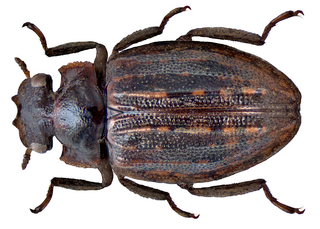
Spercheus is a genus of aquatic beetles which are placed in a family of their own, Spercheidae within the Hydrophiloidea. About 20 species are known from around the world except the Nearctic with the majority being from the Oriental and Afrotropical Realms.

Hydrophilidae, also known colloquially as water scavenger beetles, is a family of beetles. Aquatic hydrophilids are notable for their long maxillary palps, which are longer than their antennae. Several of the former subfamilies of Hydrophilidae have recently been removed and elevated to family rank; Epimetopidae, Georissidae, Helophoridae, Hydrochidae, and Spercheidae. While the majority of hydrophilids are aquatic, around a third of described species are terrestrial, mostly belonging to the subfamily Sphaeridiinae.

Georissus, also called minute mud-loving beetles, is the only genus in the beetle family Georissidae. They are tiny insects living in wet soil, often near water. They are found on every continent except Antarctica.

Helophorus is the only genus in the beetle family Helophoridae within the Hydrophiloidea. They are small insects, found mainly in the Holarctic region, but two or three species also live in the Afrotropical region, Central America and one in the Indomalayan region.
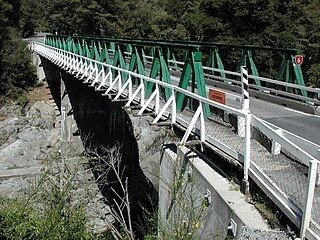
Pelorus Bridge is a tiny locality in Marlborough, New Zealand where the Rai River meets Pelorus River. State Highway 6 crosses the Pelorus River at Pelorus Bridge Scenic Reserve, which was used as one of the film locations for The Hobbit: The Desolation of Smaug. You can take a guided kayak tour to experience this Hobbit filming location.

Hydrophilus palpalis is a species of water scavenger beetles belonging to the Hydrophilinae subfamily.

Helobata is a mostly Neotropical genus of water scavenger beetle in the family Hydrophilidae. It contains 13 described species, one of which is broadly distributed, reaching North America.
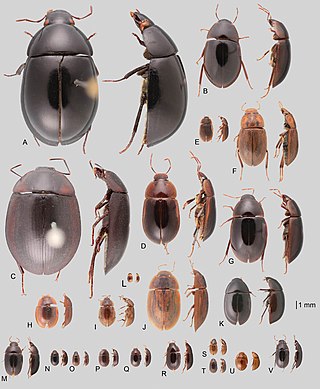
Acidocerinae is a subfamily in the family Hydrophilidae of aquatic beetles, and it contains over 500 species in 23 genera.
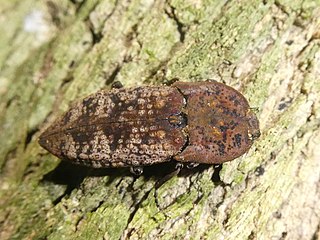
Amychus granulatus, commonly known as the Cook Strait click beetle, is a large flightless click beetle in the family Elateridae.
Oosternum is a genus of water scavenger beetles in the family Hydrophilidae. There are more than 20 described species in Oosternum.
Phaenonotum is a genus of water scavenger beetles in the family Hydrophilidae. There are about nine described species in Phaenonotum.
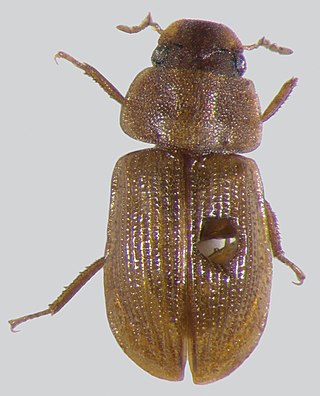
Acidocerus aphodioides is a species of water scavenger beetle in the family Hydrophilidae. It is the only species in the genus Acidocerus. It is known only from Mozambique.
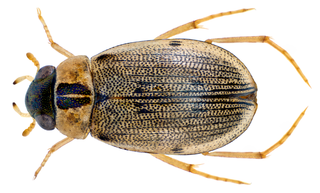
Berosus pulchellus, is a species of water scavenger beetle found in Oriental, Australasian, Afrotropical and Palaearctic regional countries such as India, Sri Lanka, Hong Kong, Japan, Iran, Cambodia and Australia.
Cercyon (Clinocercyon) lineolatus, is a species of water scavenger beetle found in several Oriental and Oceanian countries.
Cercyon (Paracycreon) subsolanus, is a species of water scavenger beetle found in Bhutan, China, India, Indonesia, Malaysia, Nepal, Philippines, Singapore, Sri Lanka, Thailand, and Vietnam.
Coelostoma (Holocoelostoma) stultum, is a species of water scavenger beetle widely distributed in Palearctic and Oriental realms from West Pacific towards Indian Ocean, such as China, Taiwan, Andaman Islands, Myanmar, India, Indonesia, Japan, Korea, Malaysia, Mascarene Islands, Nicobar Islands, Oman, Philippines, Saudi Arabia, South Korea, Sri Lanka, Thailand, United Arab Emirates, Oman, and Vietnam.

Coelostoma (Coelostoma) vitalisi, is a species of water scavenger beetle found in China, Taiwan, Japan, India, Indonesia, Japan, Malaysia, Nepal, Singapore, Sri Lanka, Cambodia, Thailand and Vietnam.
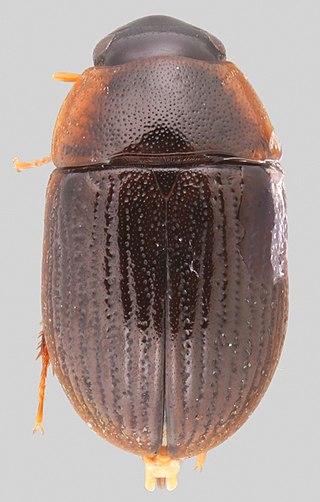
Agraphydrus is a genus of water scavenger beetle in the family Hydrophilidae represented by 205 described species. It is distributed across the Afrotropical, Australasian, and Indomalayan realms.
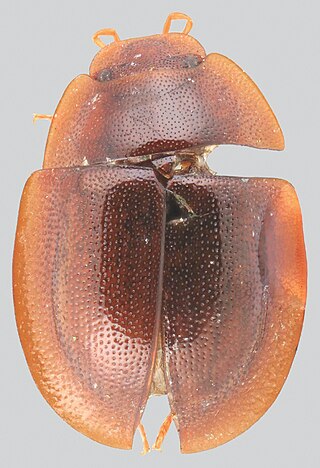
Helopeltarium is a genus of water scavenger beetle in the family Hydrophilidae represented by only one species. It is known only from Myanmar.

Novochares is a primarily Neotropical genus of water scavenger beetles in the family Hydrophilidae represented by 15 described species, one of which is thought to be introduced in Florida in the United States of America.


















